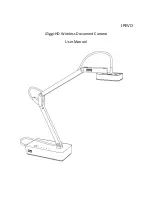
may cause burning or bleaching of the material
or may damage the reflector.
• NEVER dismantle the flash unit! DANGER: HIGH
VOLTAGE! Repairs must only be completed by
an authorised repair service.
• Do not touch the contacts of the flash unit.
• The flash unit must not be used if the case has
been so badly damaged that internal com-
ponents are exposed. Remove the batteries!
• Do not use defective batteries!
2. Preparations
2.1 Power supply
The flash unit can be operated with any of the fol-
lowing batteries:
• 2 alkaline-manganese dry-cell batteries 1.5 V,
type IEC LR03 (size AAA). Maintenance-free
power source for moderate power requirements.
• 2 nickel-metal-hydride batteries 1.2 V, type IEC
HR03 (size AAA). They have a significantly hig-
her capacity than NiCad batteries and are less
harmful to the environment (no cadmium). They
permit very fast recycling and are economical in
use because they are rechargeable.
• 2 NiCad batteries 1.2 V, type IEC KR03
(size AAA).
The batteries are exhausted if the recycling
time exceeds 60 seconds when firing flashes
at full light output. Remove the batteries from
the flash unit if you are not going to use it for
an extended period of time.
2.2 Loading and replacing the batteries
• Turn off the flash unit by its main switch.
• Slide the battery compartment cover to the out-
side of the flash unit.
• Insert the batteries as indicated by the symbols
in the battery compartment.
When loading the batteries ensure that their
+ and - poles are aligned with the symbols.
Transposed poles can destroy the flash unit.
Always exchange both batteries, replacing
them with identical batteries of the same
capacity from the same manufacturer! Do not
☞
☞
86
ķ
703 47 0173-A2 28 AF-3 25.01.2005 15:53 Uhr Seite 86
















































